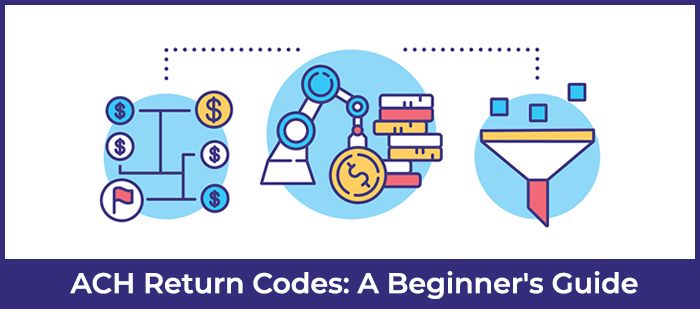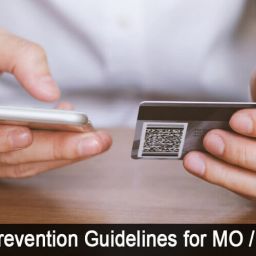
Are you new to the world of ACH Return Codes? Don’t worry, you’re not alone. Understanding the different ACH Return Codes can be confusing for those just starting out. But have no fear! This blog post will provide you with a beginner’s guide to ACH Return Codes, helping you get up to speed on the basics. Read on to learn more about ACH Return Codes and how they can affect your finances.
What are ACH return codes?
Financial institutions are informed of the status of a transaction using ACH return codes. They play a significant role in the Automated Clearing House, or ACH, network, a system for electronic financial transactions in the US. In general, ACH return codes are used to show. Whether a transaction has been accepted or rejected. The other transaction may be rejected for a number of reasons. And these reasons are frequently stated within the ACH return code. These codes typically indicate the reason a transaction was declined. Such as insufficient funds or incorrect routing numbers.
![]()
Email us anytime!
Email customer service 24/7
![]()
Call us anytime!
Reach customer care 24/7 at +1 (888) 901-8653
When a transaction is declined. The financial institution will issue an ACH return code to the customer. Merchant or other party involved in the transaction. This code will provide information about. Why the transaction was declined and will also include instructions. On how to proceed with the transaction. In some cases. The customer may need to take additional steps in order to successfully complete the transaction. It is important to understand ACH return codes. They can be issued for both successful and unsuccessful transactions, as they serve to provide information about the status of each transaction.
The different types of ACH return codes
- Return Reason Code R01 – Insufficient Funds: This return code is most commonly used when there are not enough funds in the account to cover the payment amount. It is also used if an account holder has elected a payment processing service, such as an overdraft protection plan, that does not have sufficient funds to cover the payment.
- Return Reason Code R02 – Account Closed: This return code indicates that the account has been closed. It could also be used when an account number or bank routing number is incorrect.
- Return Reason Code R03 – No Account/Unable to Locate Account: This return code is issued when the account holder’s financial institution cannot locate an account with the account or routing number that was provided.
- Return Reason Code R04 – Invalid ACH Routing Number: This return code is issued when the ACH routing number does not exist or is not in the correct format.
- Return Reason Code R05 – Unauthorized Debit to Consumer Account Using Corporate SEC Code: This return code is issued when a corporate SEC code is used for an ACH transaction but the customer has not authorized the transaction.
- Return Reason Code R06 – Returned per ODFI’s Request: This return code is used by the originator’s financial institution when they are requesting a return of the transaction.
- Return Reason Code R07 – Authorization Revoked by Customer: This return code is issued when a customer has revoked authorization of an ACH transaction and has requested a return of the transaction.
- Return Reason Code R08 – Payment Stopped by Originator: This return code is issued when the originator of an ACH transaction has requested a return of the transaction before it was processed.
- Return Reason Code R09 – Uncollected Funds: This return code is issued when the account holder does not have sufficient funds to cover the payment and a collection process is underway.
- Return Reason Code R10 – Customer Advises Not Authorized: This return code is issued when the customer has advised that they did not authorize an ACH transaction and has requested a return of the transaction.
Our Latest Blogs
- How to Spot a Refund Service Scammer – Chargeback Expertz
- The Fraud Prevention Guidelines for MO / TO Merchants
- A Quick Guide to Manage Cancellation and Return Chargebacks
- Understand the Chargeback Processing Cycle for MasterCard Transactions
How to interpret ACH return codes
Interpreting ACH return codes is an important part of managing your ACH transactions. When a transaction has been processed. You’ll receive a response from the receiving financial institution with a return code indicating the status of the transaction. Each return code is unique and provides information about why the transaction was returned.
The most common ACH return codes are R01, R02, R03, R04, R07, and R10. Here is what each one means:
R01 – Insufficient Funds: The account holder did not have enough money in their account to cover the transaction.
R02 – Account Closed: The account holder has closed their account since the transaction was initiated.
R03 – No Account/Unable to Locate Account: The receiving bank cannot locate the account referenced in the transaction.
R04 – Invalid Account Number: The account number provided does not match the one on record with the receiving bank.
R07 – Authorization Revoked by Customer: The customer has canceled their authorization for the payment or transfer.
R10 – Customer Advises Not Authorized: The customer has contacted the receiving bank to inform them that they did not authorize the payment or transfer.
By understanding these common ACH return codes, you can quickly identify issues with payments and take appropriate action to resolve them.
How to avoid ACH return codes
Avoiding ACH return codes is possible, but it requires careful planning and due diligence. Before initiating an ACH transaction, there are several steps that can be taken to ensure the transaction will be successful:
- Verify account numbers. Verify the account number provided is correct and up to date. Incorrect account numbers are a leading cause of ACH return codes.
- Verify names. Verify the name associated with the account number is correct and up to date. This helps prevent returns due to incorrect names or misspellings.
- Use Address Verification Services (AVS). When entering billing information online, use an AVS to ensure the address associated with the credit card is accurate.
- Double-check accuracy. Carefully review all information before submitting the transaction. Including the amount of money being transferred.
- Monitor accounts. Monitor your accounts on a regular basis for suspicious activity or unauthorized transactions. This can help detect any attempted fraud. Activity early and reduce the likelihood of an ACH return code being issued.
Following these steps can help ensure that your ACH transactions are successful and reduce the likelihood of receiving them. An ACH return code. However, if you do receive an ACH return code. It’s important to understand. Why it was issued and how to interpret it in the order to take corrective action.
Resources for further reading
The National Automated Clearing House Association (NACHA) is the governing body of ACH. The transfers and offers a wealth of information on its website.
For further understanding of ACH return codes, you can consult NACHA’s “ACH Return Codes: What to Expect” document. This document contains a comprehensive overview of all ACH. And return codes and the actions to take in response to each one.
You can also check out the Federal Reserve’s website for more information about ACH return codes. This site provides additional resources and educational materials for businesses and consumers to better understand and utilize ACH transfers.
Lastly, you may wish to consult the resources available from your financial institution or banking provider. They may have additional information or advice on how to interpret and respond to ACH return codes.





